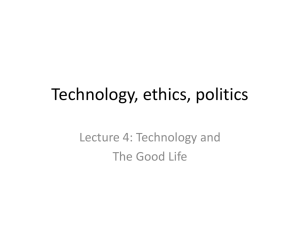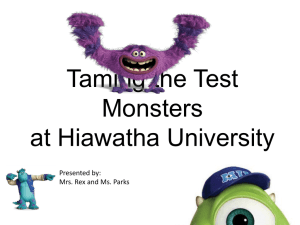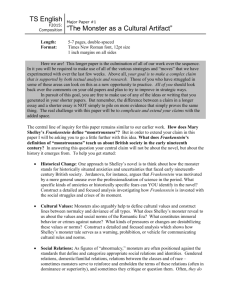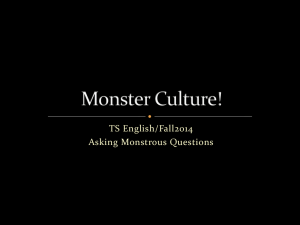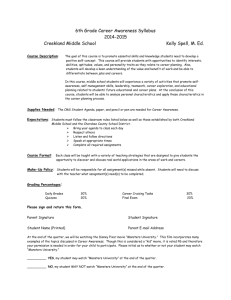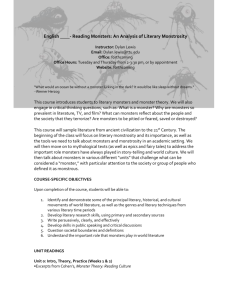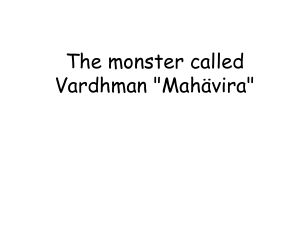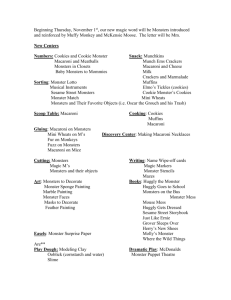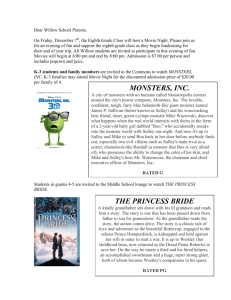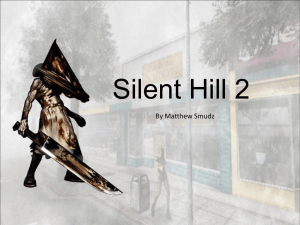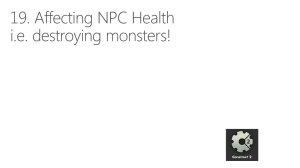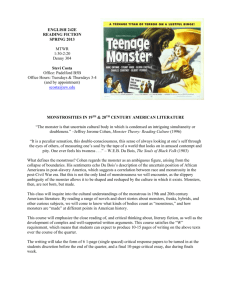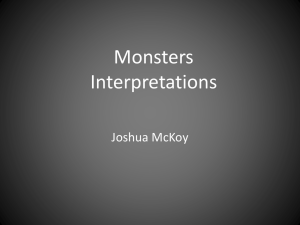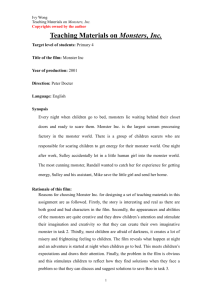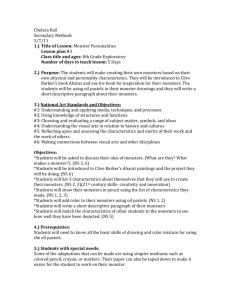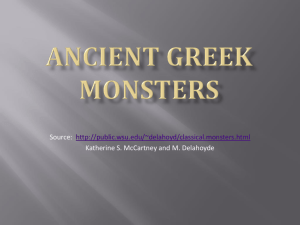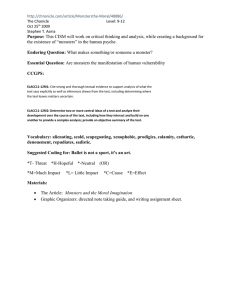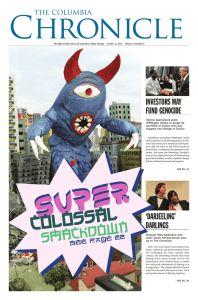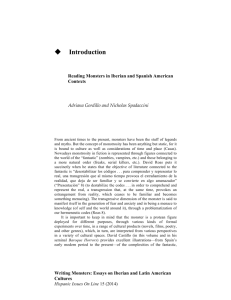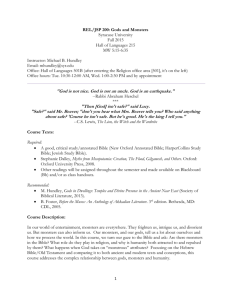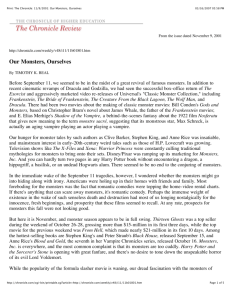The Vendetta.doc
advertisement
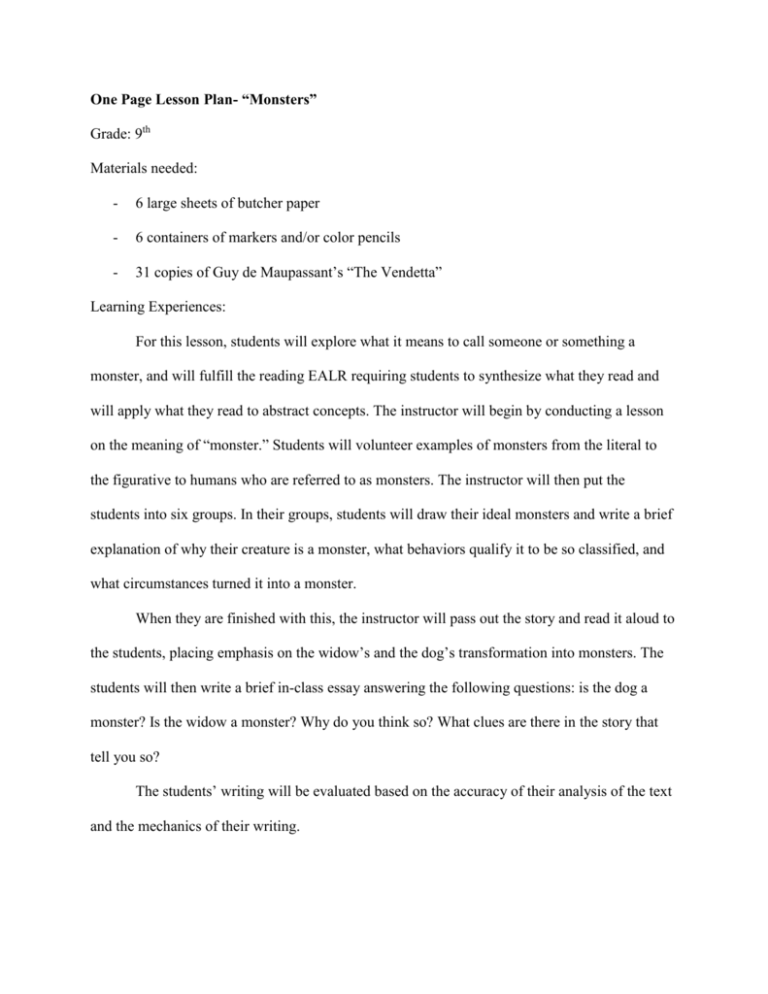
One Page Lesson Plan- “Monsters” Grade: 9th Materials needed: - 6 large sheets of butcher paper - 6 containers of markers and/or color pencils - 31 copies of Guy de Maupassant’s “The Vendetta” Learning Experiences: For this lesson, students will explore what it means to call someone or something a monster, and will fulfill the reading EALR requiring students to synthesize what they read and will apply what they read to abstract concepts. The instructor will begin by conducting a lesson on the meaning of “monster.” Students will volunteer examples of monsters from the literal to the figurative to humans who are referred to as monsters. The instructor will then put the students into six groups. In their groups, students will draw their ideal monsters and write a brief explanation of why their creature is a monster, what behaviors qualify it to be so classified, and what circumstances turned it into a monster. When they are finished with this, the instructor will pass out the story and read it aloud to the students, placing emphasis on the widow’s and the dog’s transformation into monsters. The students will then write a brief in-class essay answering the following questions: is the dog a monster? Is the widow a monster? Why do you think so? What clues are there in the story that tell you so? The students’ writing will be evaluated based on the accuracy of their analysis of the text and the mechanics of their writing. Monsters Lesson Reflection When teaching this lesson, very little didn’t go well. However, when I did let them loose to create their monsters, I was a little disappointed with the lack of variety. Almost everyone did literal monsters, and almost everyone made their monsters born that way and not created by bad circumstances. One group did alcohol as a monster, and apparently these students had very negative experiences with alcohol as their families. Were I to do this lesson again, I might give each group a unique assignment in order to force them to adopt multiple viewpoints on monsters. This lack of variety was the only thing that didn’t go as I planned. The writing that they turned in was very high quality, and I certainly got more unique answers from them on their writing than I did on the actual creative portion of their lesson. I think I accomplished part of the goal of the lesson, but not all of it. The students did use clues from the text to support the suppositions made in their writing, including the tone and mood of the writing. However, most students didn’t think critically about what makes a monster when they did their monster posters. While I did fulfill the requirements of the EALRs, it was disappointing to me that they didn’t think about the real-world applications of the concepts we studied. This lesson plan is pretty open ended, but when my master teacher and I designed it, that was our intention. It is specific enough so that any teacher can do it, but open enough so that any teacher can include his or her own perspectives on what makes a monster, and it’s a very personal topic. The paper topic is specific as well, and any teacher could actually assign this as a literature analysis assessment without even including the monster poster. Classroom management was easy; this is an honors class, and the students are self-motivated. Since students got to include their own perspectives on what qualifies as a monster, it qualifies as studentcentered.
